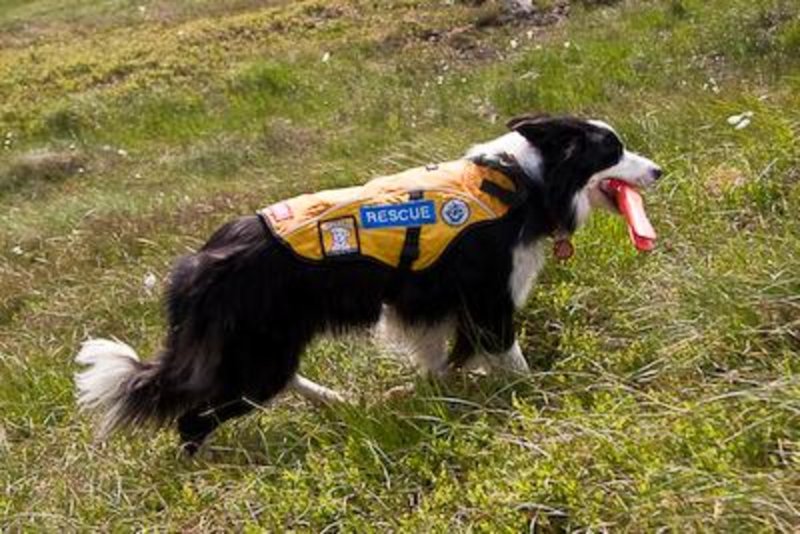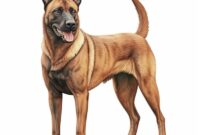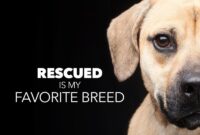Search Rescue Dogs – Rescue dog Caskia is just one of many who participated in search and rescue operations following the devastating earthquake in Turkey. Anne-Marie Utz/Image attachment via Getty Images
A magnitude 7.8 earthquake struck near the city of Gaziantep in Turkey early on Monday, February 6, 2023, killing thousands and injuring and leaving thousands more homeless in Turkey and Syria.
Search Rescue Dogs

Many countries, including the United States, are sending aid to help with rescue efforts. The US Transportation Command (USTranscom) and the US Agency for International Development (USAID) said they were sending two Urban Search and Rescue (USAR) teams, including 161 USAR personnel, 170,000 pounds of equipment and 12 search and rescue dogs. To help pull survivors. from the debris.
The 15 Best Search And Rescue Dog Breeds
Because time is of the essence in a rescue operation like this, search and rescue dogs are invaluable tools for locating anyone trapped alive in the debris. Highly trained search and rescue dogs are qualified to detect the scent of buried humans. The United States isn’t the only country sending dogs to aid rescue efforts in Turkey and Syria. Mexico has sent 16 dogs and Croatia, Czech Republic, Germany, Greece, Libya, Poland, Switzerland and the United Kingdom are also sending dogs with their handlers.
So what exactly is the job of a search and rescue dog and its handler? And how are these dogs trained to detect human scents and tell their handlers where they are? This article contains instructions, tips and detailed instructions. Please help us make the content more encyclopaedic or move it to Wikiversity, Wikibooks or Wikivoyage. (April 2024)
A search and rescue (SAR) dog is a dog trained to respond to crime scenes, accidents, missing persons incidents, and natural or man-made disasters.
These dogs detect human SCT, which is a patch of skin unique to each individual and the distinct smell of water and oil secretions.
Mexico Sends Famous Search Dog Team To Turkey After Earthquake
And people have been known to find remains underwater, in ice and collapsed buildings, as well as buried underground.
Also known as human remains detection dogs (HRDD), cadaver dogs are employed in forsythic settings to sniff out and locate human remains, which may include buried, hidden, or old, as well as body parts, skeletal remains, and contaminated soil. with disintegrating fluid.
Unlike other types of tracking dogs that use SCT on the ground or on specific objects, cadaver dogs are trained to detect SCT both on the ground and in flight and to indicate the area where the concentration of SCT is highest.
More specifically, HRDDs in Canada and the United States have been used to locate unmarked graves of Indigenous children around former residential school sites.
Profile Of A Dallas Search And Rescue Dog
Law enforcement, medical examiners, and anthropologists often work closely with cadaver dogs and their handlers to coordinate searches, testing, and/or body recovery.
Already in the 17th century, St. Bernard dogs were used by the monks of the St. Bernard Inn in the Swiss Alps to find and rescue injured or lost travelers or to locate their remains.
However, the official use of search and rescue dogs was not recorded until World War I, when military trained dogs were used to locate wounded soldiers.
The story of the cadaver dogs is even more true. In 1808, an untrained dog alerted the stable to a murder suspect, leading to the discovery of the remains of two missing women.
Facts About The Search And Rescue Dog: Iro
However, the first use of a dog trained solely for Forsythic body detection was in 1974 by the New York State Police, when they investigated a homicide in Oneda County, involving multiple victims buried in a large wooded area.
From there, training programs were developed, and special cadaver dogs are now trained and maintained by police agencies, as well as numerous volunteer search dog teams.
In most cases, purebred dogs are chosen, as this allows for a clear understanding of the dog’s potential working abilities and any optical problems.

Individual dogs are selected for successful fieldwork related behaviors, which may include, but are not limited to;
Meet 2016 Hero Search & Rescue Dog
In addition to behavior, physical characteristics are also considered when choosing the right dog for work.
Depending on the environment a dog will work in, choosing one breed over the other will sse.
For example, a heavy-haired dog is not a good choice in a hot climate, and a short-haired dog is not a good choice in a cold climate.
The rougher and longer the terrain, the more endurance the dog will need, which is the result of care and treatment.
Office Of The Fire Commissioner
And today, many of the training methods used in SAR training are based on methods developed to train military dogs during World Wars I and II.
Playing “SCT games” starting when the puppy is 10-12 weeks old is a good way to begin this training.
“Hide and seek” activities are used as a dog age to simulate people lost in natural or man-made disasters.

Most SAR dogs, no matter what they do, spend about 12-18 months in training, for 20 or more hours per week.
A Bloodhound Search And Rescue Dog Of The Illinois And Wisconsin Search And Rescue Dogs Organization Stock Photo
Critical components of training are repetition and rewards, as animals learn through repeated actions and receive rewards for said actions.
A dog in training will develop an alarm, a behavior that allows its handler to interpret that the dog has identified a source of SCT, which is used when searching an area during a job.
Passive cues may include snapping and snorting or sitting, while active cues may include barking, scratching, or digging.
These shielded aids can be placed on toys, in containers or in tubes, which are usually placed in concrete blocks and used to train SAR dogs.
Taiwan’s Sniffer Dogs Win Hearts In Search For Quake Victims
Because live human scts are all unique, SAR dog training aids should be rotated and varied during training.
In training, dogs must demonstrate a willingness to work despite distractions, adequate control over commands, and the ability to learn through positive reward reinforcement.
There are many different training methods available and all for different types of SAR, and each will work better with some dogs and not so much with others.

It is important that the handler chooses the methods that work best for their dog, ensuring that they follow the 3 basic principles: “Patience, Persistence and Praise”.
Facts About Search And Rescue Dogs
Once a team is trained, its skills and competencies must be maintained with regular practice and additional training.
Cadaver dog training is more specific and, in addition to regular SAR training, requires regular and repeated exposure to target SCT.
Most SAR teams are made up of volunteer helpers and their personal companion dogs, who are also their working companions.
The handler’s primary responsibility is to ensure that the dog is safe, functional and in good health.
Search Dogs Avalanche (sarda) New Zealand
For a SAR dog to be as effective as possible, it must be paired with an equally trained handler in the field who is competent and familiar with the dog’s body language and alarms.
While the actual location of the SCT depends on the SAR dog, the skill level of the handler is important in SAR operations.
The responsibility falls on the handler to identify and adequately alert the dog, or to identify the source of the sct, to change behavior toward the odor.

Failure to make an alarm call may result in missing the target odor source, meaning the person, body, or remains may not be found.
Transforming China’s Search And Rescue Sector, One Dog At At Time
Ideally, a dog works with only one handler for its entire career, from puppy training to retirement, and reassignment is a last resort, as all work with the previous handler ends.
Communication between a dog and its handler is often subtle and nonverbal, making it difficult for the other handler to “read” and understand.
Temperature, wind direction, wind speed and humidity all affect how sct moves in the air and can make sct unsuitable for tracking dogs.
Sandy or dry soil, for example, is more likely to loosen skates than clay or moist soil.
For The Lost Or Missing In Md, These Search Dogs Really Are Humankind’s Best Friend
Physical characteristics of a missing person can also influence the search, as an older adult delivers a larger pickup than a small child, meaning the ability to trace the pickup will differ depending on who is located.
Additionally, if the person is clothed or wrapped when they want to disappear or die, this can prevent escape or slow decomposition, making it more difficult for SAR dogs to track.
Chemicals, such as oil, are common in SAR scenes and can affect a dog’s tracking accuracy.

It is important that the dog is given time to acclimate to the environment before starting work and that the handler is aware of any potential contaminants.
Meet Diesel And Elcha, Garfield County Search And Rescue Dogs
Because correctly identifying the location of the SCT depends on both the dog’s tracking of the SCT and the handler’s interpretation of the signal, the possibility exists that the handler may misinterpret or fail to recognize the alert.
Additionally, since dogs are not perfect, they are also prone to bad days with reasons such as physical ailments or inability to adapt to the hunting environment.
In terms of standards, there are no current standards for determining the effectiveness of SAR dogs.
Many countries, cities and regions have search and rescue organizations that use teams of dogs and handlers that can be assembled in the event of an emergency or disaster. a
On The Trail With Garfield County Search And Rescue Dogs
Search and rescue dogs, best search and rescue dogs, famous search and rescue dogs, search for rescue dogs, search and rescue dogs breeds, search & rescue, maine search and rescue dogs, rescue search, search and rescue dogs california, pitbull search and rescue dogs, search and rescue dogs facts, train search and rescue dogs
- Search Rescue Dogs - July 29, 2024
- Police Dog Training - July 25, 2024
- Pointing Dog Training - July 25, 2024





